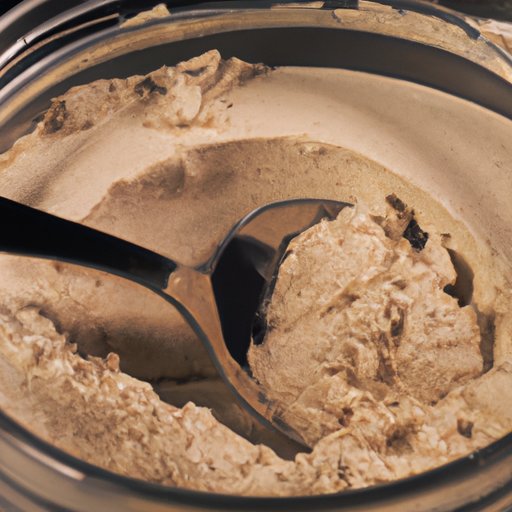
Introduction
Gluten intolerance is a common condition that affects many people worldwide. For those who cannot consume gluten, it is essential to find gluten-free alternatives to many staples, including thickeners like gelatin, agar, and pectin. Pectin, a gelling agent found in plants, fruits, and vegetables, is a popular thickener in cooking and baking. But is pectin gluten-free? In this article, we will explore the use of pectin in cooking and baking and help you understand if pectin is gluten-free.
What is Pectin?
Pectin is a type of soluble fiber found in plants, fruits, and vegetables that acts as a natural thickening agent. It is commonly used in making jams, jellies, and other confectionaries. Pectin is a complex carbohydrate compound that consists of chains of long sugar molecules arranged in a unique structure that creates the thickening properties of pectin.
Pectin is available as a commercial product in powder, liquid, or gel form. Pectin comes in different types, including high-methoxyl pectin, low-methoxyl pectin, and amidated pectin, which are differentiated based on their degree of esterification, or the amount of methanol added to the pectin during the manufacturing process.
Pectin vs. Gluten
Gluten is a protein found in wheat, barley, rye, and other cereal grains. Gluten gives dough its elasticity and helps it rise and maintain its shape. Pectin, on the other hand, is a type of carbohydrate found in plant cell walls that acts as a thickener.
These two substances differ significantly in terms of their molecular structure. Gluten is a protein composed of two specific molecules- glutenin and gliadin, while pectin is a complex carbohydrate consisting of chains of long sugar molecules. Therefore, pectin does not contain gluten, making it safe for people with celiac disease or gluten sensitivity to consume.
According to the International Food Information Council Foundation, pectin is considered a safe food additive, and the FDA has classified it as Generally Recognized as Safe (GRAS).
Benefits of Pectin
In addition to its thickening properties, pectin also offers numerous health benefits. Pectin is a soluble fiber that helps regulate blood sugar levels, prevents constipation, and acts as a prebiotic, promoting the growth of beneficial gut bacteria. Pectin also helps lower blood cholesterol levels by binding to fats and removing them from the body.
Pectin is a popular ingredient in vegan and vegetarian cuisine, and it can replace gelatin, which is derived from animal collagen. Pectin is a healthier option than gelatin, which can be high in calories, sugar, and preservatives.
Gluten-Free Baking with Pectin
As a gluten-free alternative to wheat flour, pectin can be used in baked goods to create a soft and fluffy texture. Incorporating pectin into gluten-free baked goods can improve their structure, moisture retention, and overall quality.
When cooking or baking with pectin, it is essential to follow the manufacturer’s instructions and measurements as pectin can react differently depending on the recipe and the type of fruit or vegetable used.
Some popular recipes that use pectin include raspberry jam, strawberry jam, and blueberry jam. Pectin can also be used in muffins, cakes, and desserts as a stabilizer and thickener.
Finding Gluten-Free Pectin
Many commercial pectin products contain additives such as maltodextrin, dextrose, or citric acid, which may contain gluten. Therefore, it is crucial to read product labels and choose a pectin product that is certified gluten-free, specifically labeled as gluten-free, or suitable for a gluten-free diet.
Gluten-free pectin is readily available from health food and grocery stores, and you can also find gluten-free pectin products online. It is essential to check the product’s labeling, including the manufacturing process and ingredients, to ensure that it is free from gluten.
Special Diets and Pectin
Vegan and paleo diets can benefit from pectin’s versatility in cooking and baking. Pectin can be used in vegan recipes as a thickening agent, such as in vegan cheese substitutes, agar replacements, and vegan gummy candies. For paleo dieters, pectin can replace starch or flour, which are typically avoided on the paleo diet.
There are many gluten-free and pectin-containing recipes available online for those following a special diet, including gluten-free and vegan sourdough bread, paleo raspberry chia jam, and vegan cashew cream cheese.
Conclusion
Pectin is a safe and versatile thickening agent that offers many health benefits. It is gluten-free and suitable for people with celiac disease or gluten sensitivity. When cooking or baking, it is important to choose a pectin product that is labeled as gluten-free or certified gluten-free to avoid any accidental exposure to gluten. Pectin can be used in a range of recipes, including jams, jellies, baked goods, and vegan and paleo recipes, making it an excellent substitute for gluten-containing ingredients.





